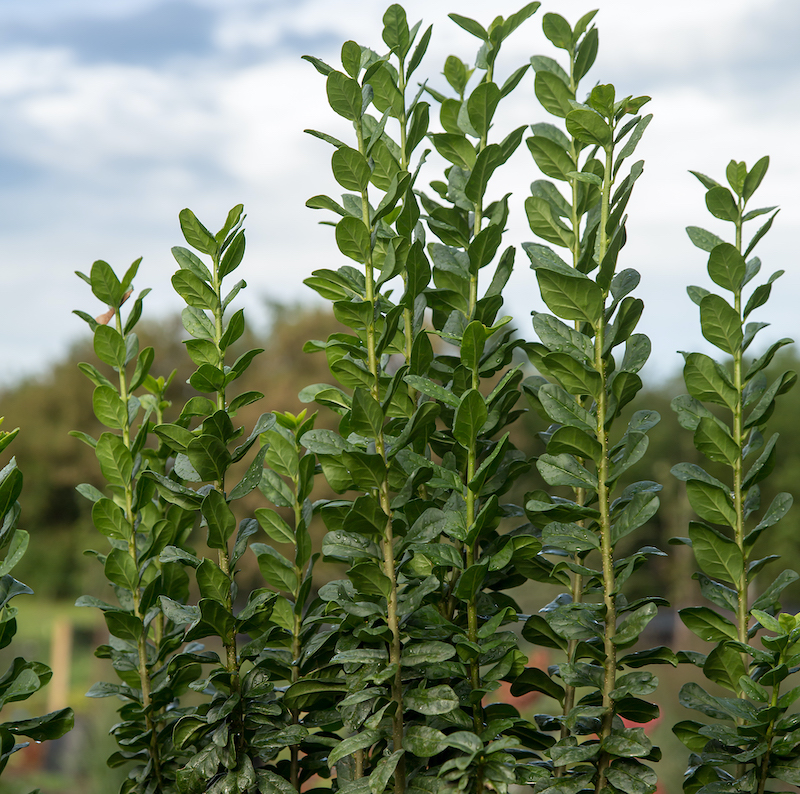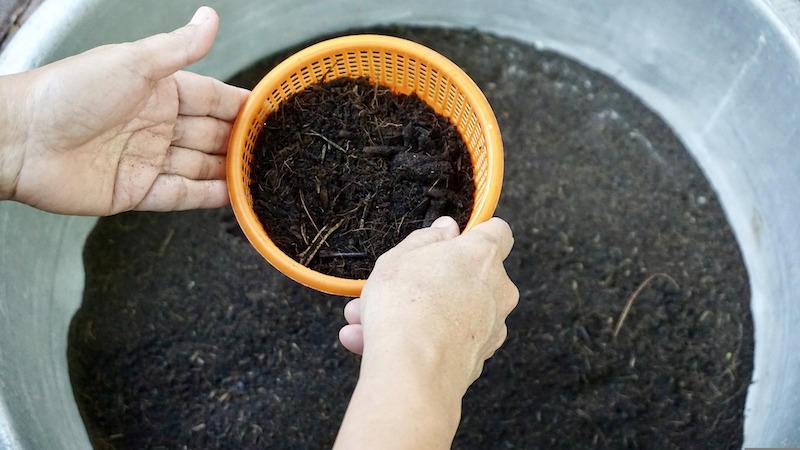Privet is a semi-evergreen or evergreen shrub that is fast growing and one of the most popular shrubs for topiary and formal hedges. A tightly clipped topiary can be achieved with just about any Privet cultivar. The smaller cultivars require less maintenance when grown in a pot than the more common large varieties.

Planting Privet in Pots
Containers are best planted late in the winter or early spring when the Privet’s roots start to grow actively. Privet is better able to cope with a hot or dry summer after the roots have had time to settle in. Privet will need a location with at least 6-8 hours of full sun. Privet is usually grown in large containers that are not easy to move. Pots made of terracotta may crack or during a freeze if the pots cannot be insulated or moved to a sheltered location.
Containers made of metal can give your deck or patio a modern look, although these containers will get extra cold in the winter and hot in the summer and may rust. These pots may need extra insulation over the winter months, along with careful attention to watering during the summer. Whichever container is used, the drainage needs to be excellent. Privet does not tolerate waterlogged soil.

Best Soil For Privet in Pots
The best soil for planting into containers is a lightweight potting soil with plenty of air spaces so that the roots can breathe and not become waterlogged. An all-purpose potting mix will contain a certain amount of perlite or vermiculite, making the soil light and airy. Planting into extra large containers may require more perlite or fine horticultural grit mixed into the potting mix to assist drainage further. Over time and repeated watering, the soil will settle into the air pockets and will need refreshing every 2-3 years.
If a container is too big to remove the soil completely, remove part of the old soil from the top and around the sides of the pot to make room for new potting soil. Avoid placing plastic bottles, bricks, or packing peanuts at the bottom of the pot, which can deprive the roots of enough area to spread out.
Potted privet is most successful when the plants are given plenty of sunshine, adequate water, and the proper nutrients.

Watering Privet in Pots
Privet needs well-drained soil that retains a good amount of moisture. The amount of watering will depend on the time of year and the size of the container. Smaller containers will dry out faster than large containers. The soil should be given time to dry in between watering sessions. When the top 1-2 inches of soil are dry, it will be time to thoroughly soak the pot until water runs from the drainage holes.
Watering will need to continue through the winter when temperatures are above 45 degrees F at night. All watering needs to stop when temperatures fall below 40 F and can resume when new growth appears in the spring.
Fertilizing Privet in Pots
Shrubs growing in pots need fertilizing more often than those in the ground. Constant watering washes the nutrients out of the soil, which need to be replaced twice a month for semi-evergreen shrubs. Fertilize with a granular formulation that has a balanced ratio of N-P-K. This will support the dense foliage growth of Privet.
Winter Care For Privet in Pots
Extra protection may be needed for pots in the coldest growing zones. You can wrap the outside of the pot with burlap or Agribon horticultural fleece to protect the root system. If the containers are small and moveable, they can be moved out of prevailing winds and storms. Watering will be necessary anytime the nighttime temperatures are above 45 degrees F. Any pruning of the Privet should be done well before the first freeze in your gardening zone. Freshly pruned branches need time to scar over and harden before cold weather. Typically, Privet does not require pruning after early August to keep its shape.
Growing Privet Indoors
Privet is not a good candidate for growing as a houseplant. The shrub can be evergreen or semi-evergreen and requires a period of cold temperatures to rest during the winter until new growth resumes in the spring.
 |
Author Robbin Small - Published 9-18-2022 |
